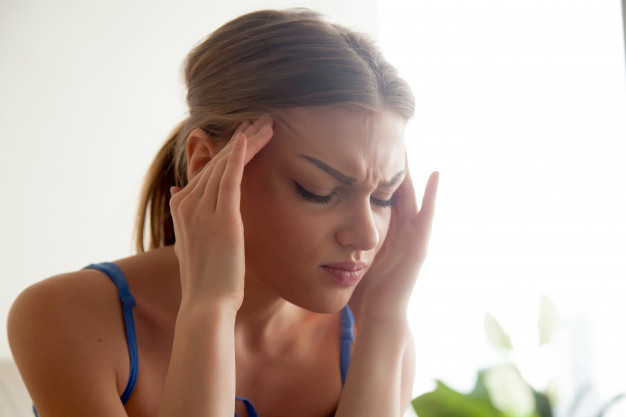
Anxiety has been linked to stress. As well as feelings of fear and worry, it often involves physical symptoms, such as muscle tension.
It is different from a panic attack, which is a symptom of panic disorder. Anxiety often relates to a specific event or situation, although this is not always the case.
However, if levels of stress and anxiety continue for a long time, further problems may develop.
Fast facts about anxiety
- An anxiety attack usually involves a fear of some specific occurrence or problem that could happen.
- Symptoms include worry, restlessness, and possibly physical symptoms, such as changes in heart rate.
- Anxiety is different from a panic attack, but it can occur as part of an anxiety or panic disorder.
Anxiety can be a symptom of panic, but it is different from a panic attack.
What are the differences?
Here are some of the features that distinguish them.
An anxiety attack, or anxiety:
- can have a specific trigger, such as an exam, workplace issues, a health issue, or a relationship problem
- is not a diagnosable condition
- is less severe than a panic attack
- usually develops gradually when a person feels anxious
- involves physical symptoms, such as a racing heart or “knot in the stomach“
A panic attack:
- does not have a specific trigger
- can be a symptom of panic disorder, a diagnosable condition
- has severe symptoms
- can happen whether a person feels calm or anxious
- involves physical symptoms and feelings of terror so intense that the person fears a total loss of control or imminent death
- often occurs suddenly and unexpectedly and last between a few minutes and an hour, although the negative impact may continue
The term “anxiety attack” is not listed in the American Psychological Association’s (APA’s) Diagnostic and Statistical Manual 5th Edition (DSM-V).
Panic attacks, however, are a symptom of panic disorder in the DSM-V. Only a licensed professional can diagnose panic disorder.
Difference in symptoms
Both panic and anxiety can involve fear, a pounding or racing heart, lightheadedness, chest pain, difficulty breathing, and irrational thoughts.
However, in a panic attack, these are far more severe. The person may genuinely believe they are going to die.
A person is more likely to require medical attention if they have a panic attack versus an anxiety attack.
Differences in how they start
Anxiety can be a response to a specific worry or fear. It tends to develop gradually, and a person is usually worried or concerned at the outset. It can be mild, moderate or severe. There may be a sense that if only this problem can be solved, everything will be all right.
A panic attack can happen without warning, and there is no way to prevent it. It can happen whether a person feels calm or anxious, and even during sleep. There is often no obvious cause, and the level of fear is out of proportion to the trigger. In fact, according to the APA, the reaction is unrelated to the situation.
Differences in duration
Anxiety is often related to a specific situation. It tends to build up and continue for some time.
A panic attack starts suddenly, symptoms peak after 10 minutes and usually abate after 30 minutes or so, although the effects may last longer. Anxiety generally does not peak in this way, but some people with anxiety can progress to panic attacks.
Can anxiety lead to panic?
A person who has panic disorder may experience anxiety that they are going to have a panic attack. The uncertainty about if or when an attack is going to happen can lead to anxiety between attacks.
For a person with panic disorder, anxiety may trigger a panic attack. The fear of having a panic attack can affect the person’s behavior and ability to function in daily life.
The APA suggest there may be a biological factor underlying panic disorder, but scientists have not yet identified a specific marker.
Symptoms of anxiety
Symptoms of anxiety include:
- worry and apprehension
- restlessness
- sleep problems
- difficulty concentrating
- irritability
- sadness
- feeling pressure and hurried
Physical symptoms include:
- changes in heart rate
- tension in the head or neck
- headache
- nausea or diarrhea
- sweating
- dry mouth
- tightness in the throat and difficulty breathing
- trembling or shaking
- feeling faint
Not every case of anxiety will include all these symptoms. Anxiety can be mild, moderate, or severe, depending on the trigger and how the person reacts to it.
Faced with an examination, for example, some people might feel mildly apprehensive, while others may experience all the above symptoms.
Usually, when the hazard or perceived danger passes, symptoms go away.
Anxiety that continues for a long time or that is triggered by specific events may be a sign of another disorder, such as social anxiety disorder.
Causes
Anxiety often results from stress or feeling overwhelmed.
Common causes of anxiety include:
- work pressure
- financial pressure
- family or relationships problems
- divorce, separation, or bereavement
- concerns about parenthood or being a caregiver
- problems coping with administrative issues or technology
- changing life situations, such as moving house or changing jobs
- reduced mobility or physical function
- loss of mental function, for example, short-term memory
- having a diagnosis of a chronic health condition, such as multiple sclerosis (MS), diabetes, and others
It can also be linked to another factor or health condition, such as:
- social or another phobia
- obsessive-compulsive disorder (OCD)
- post-traumatic stress disorder (PTSD)
- genetic factors
- major stress or susceptibility to stress
- changes in the brain
- a history of drug or alcohol abuse
- excessive caffeine use
- the use of some medications
- a recent or past traumatic experience
Triggers of anxiety could include:
- public speaking
- exposure to a phobia trigger
- a fear of having a panic attack
Sometimes, anxiety can also stem from a psychological disorder.
Types of anxiety disorder
There are several different classified anxiety disorders. Each one features different types of symptoms that can, in some cases, be triggered by specific situations.
Panic disorder (PD): This involves at least two panic attacks accompanied by the constant fear of future attacks. People with panic disorder may lose a job, refuse to travel or leave their home, or completely avoid anything they believe will trigger an attack of anxiety.
Generalized anxiety disorder (GAD): This is a constant state of worry about a number of events or activities in the persons life.
Phobic disorder: This features an incapacitating and irrational fear of an object or situation, for example, a fear of spiders or open spaces (claustrophobia). Most adults with phobic disorder are aware that their fear is irrational.
Obsessive-compulsive disorder (OCD): This condition is marked by unwanted repeated thoughts (obsessions) and behaviors (compulsions).
Complications
The response that leads to stress and anxiety is designed to help us cope in difficult situations that arise temporarily.
Adrenaline is the hormone involved in the fight-or-flight response. A sudden release of this hormone prepares the body to flee from danger or to confront the danger physically.
Under normal conditions, adrenaline levels quickly revert to normal once the fear is removed. However, if anxiety continues and adrenaline levels remain high, further problems can arise.
Persistent stress and anxiety can lead to other problems, such as:
- depression
- an anxiety disorder
Ongoing stress has been linked to problems with the immune, digestive, sleep, and reproductive systems.
Physical health problems that may arise include:
- frequent colds and infections
- heart disease
- high blood pressure
- diabetes
It is important to take action or seek help to reduce stress and anxiety if it becomes overwhelming or persistent.
Tips for managing stress and anxiety include:
Know the signs: If you know when to recognize the signs that you are stressed or overly anxious, you may be able to take some action. Headaches, an inability to sleep, or overeating may all be signs that it is time to take a break or ask for help.
Know your triggers: If you can learn to recognize what makes you feel anxious, you may be able to take action. Perhaps you have taken on too many tasks? Can you ask someone to help? Does coffee or alcohol make it worse? Consider cutting down.
Diet: A busy lifestyle can result in too much fast food or too little exercise. Try to make time to sit down to a healthful meal, or take a home-made lunch with plenty of fresh fruit and vegetables to the office, instead of grabbing a burger.
Exercise: Sitting for long periods in front of a computer screen or while driving takes its toll. Try taking a 30-minute break and take a walk a day to boost your sense of wellbeing.
Learn some relaxation techniques: Yoga breathing, meditation, and other strategies can help reduce stress and anxiety. There is some evidence that the use of aromatherapy may help reduce stress, although further research is needed.
Try a new activity: Music, meditation, gardening, or joining a choir, yoga, pilates, or other group can ease stress and take your mind off your worries for a while. You may meet people with similar concerns who you can share your feelings with.
Be social: Spend time with friends and family, or find a group where you can meet others, for example, by volunteering or joining a support group. You may find they can provide emotional and practical support, as well as taking your mind off the problem at hand.
Set goals: If you are feeling overwhelmed with financial or administrative problems, for example, sit down and make a plan. Set targets and priorities and check them off as you resolve them. A plan will also help you say “no” to additional requests from others that you do not have time for.
Products that aim to help people reduce their anxiety levels through relaxation are available for purchase onlline.
Treatment
Treatment options for anxiety and related problems include:
- cognitive-behavioral therapy (CBT)
- medications, such as some types of antidepressants
- support groups for people with specific conditions
Anyone who feels overwhelmed by stress or anxiety should see a health professional for advice. Getting help early may help prevent other problems from arising.
If you are considering seeking professional help, it is important to see a properly trained and qualified person. This website offers a toolkit for finding a registered psychologist in your area.
If you or someone you know is having thoughts of suicide, you can call the National Suicide Prevention Lifeline at 1-800-273-TALK (8255). The line is open 24 hours a day, 7 days a week. All calls are confidential.












